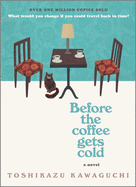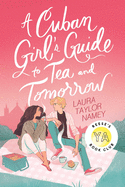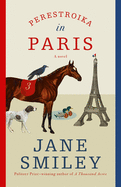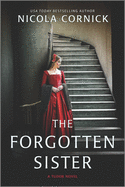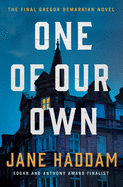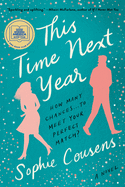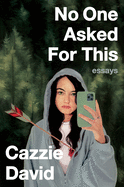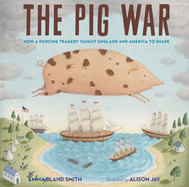Tuesday, December 8, 2020
Remember the credit card ad that featured two buddies in a van on a cross-country road trip to visit Major League baseball parks? Ever since, I've had a dream of doing something similar: but instead of ballparks, I'd visit independent bookstores in all 50 states.
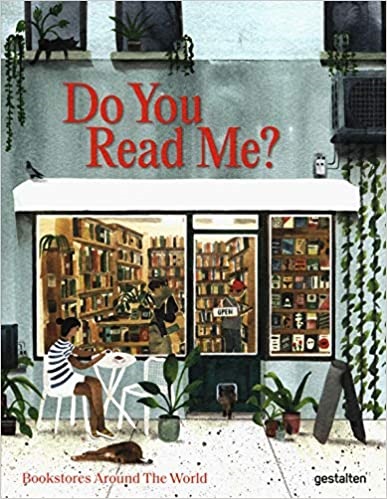 Thanks to travel writer Marianne Julia Strauss's Do You Read Me?: Bookstores Around the World (Gestalten, $60), my wish can be fulfilled, right from my own living room. This sumptuously photographed, elegantly produced 275-page volume takes booklovers on a global tour. FilBooks in Istanbul employs an elephant motif ("fil" means elephant in Turkish), teal accents on the piping, coffee and red velvet cake to lure customers. A palm tree creates the focal point of Cafebrería el Péndulo in Mexico.
Thanks to travel writer Marianne Julia Strauss's Do You Read Me?: Bookstores Around the World (Gestalten, $60), my wish can be fulfilled, right from my own living room. This sumptuously photographed, elegantly produced 275-page volume takes booklovers on a global tour. FilBooks in Istanbul employs an elephant motif ("fil" means elephant in Turkish), teal accents on the piping, coffee and red velvet cake to lure customers. A palm tree creates the focal point of Cafebrería el Péndulo in Mexico.
 |
|
| Venice's Libreria Acqua Alta | |
Books that float from the ceiling make meals at Cook & Book memorable in Brussels, while a floating 60-foot vessel makes the Book Barge that travels France's Canal du Nivernais unforgettable. Sometimes books float--literally--at Venice's Libreria Acqua Alta, where they're tucked inside gondolas and tubs to protect them when the waters rise.
For those with a passion for children's books, Mundo Zaul in Berlin stocks titles from around the world in their original languages; and Berlin's Krumulus encourages children to "touch almost everything" and runs printing workshops. 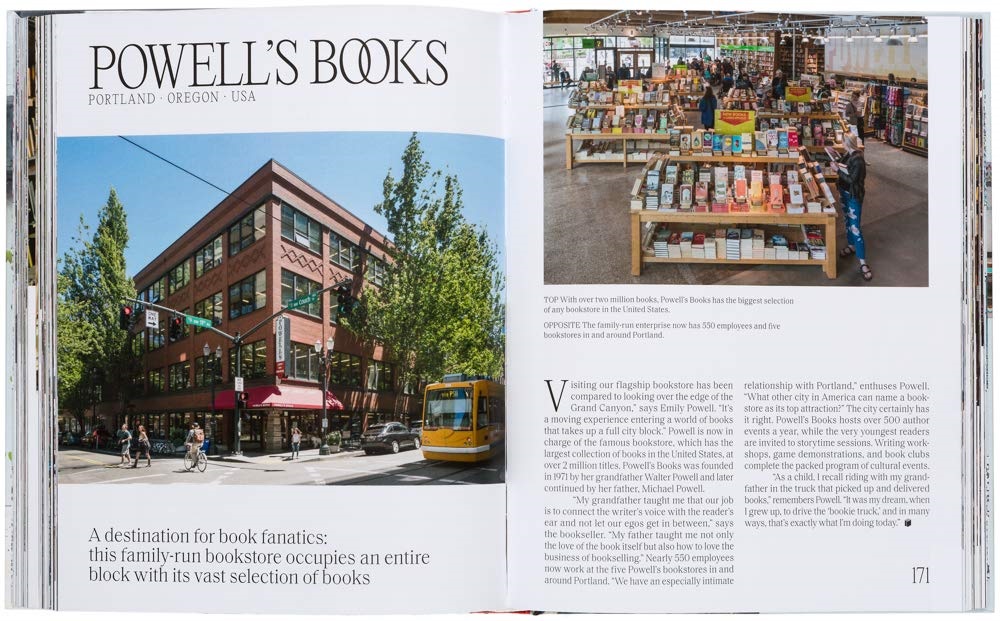 Then there's Wuguan Books in Kaohsiumg, Taiwan, where only those 18 and older can enter in the dark to view 400 books under spotlight--identities obscured, the better to browse erotica and psychology titles. Tokyo's Morioka Shoten sells just one book (which changes on a weekly basis); in Lagos, Nigeria, The Jazzhole boasts strong coffee alongside the music of Miles Davis and Duro Ikujenyo, and works by Chimamandah Ngozi Adichie.
Then there's Wuguan Books in Kaohsiumg, Taiwan, where only those 18 and older can enter in the dark to view 400 books under spotlight--identities obscured, the better to browse erotica and psychology titles. Tokyo's Morioka Shoten sells just one book (which changes on a weekly basis); in Lagos, Nigeria, The Jazzhole boasts strong coffee alongside the music of Miles Davis and Duro Ikujenyo, and works by Chimamandah Ngozi Adichie.
This eye candy may well be the ticket to give bibliophiles an itch to travel. --Jennifer M. Brown, senior editor
Before the Coffee Gets Cold
by Toshikazu Kawaguchi, transl. by Geoffrey Trousselot
It's no coincidence that the quiet Before the Coffee Gets Cold, translated from Japanese by Geoffrey Trousselot, is reminiscent of a three-act play. Author Toshikazu Kawaguchi is also an accomplished playwright. In a dowdy, windowless coffee shop, characters come and go, and "the three wall clocks each showed different times." Nagure, along with his wife, Kei, and her sister Kazu, run a shop that has seen better days; an urban legend from years ago, claiming it "could transport people back to the past," offered a brief flurry of fame. Although the notoriety is mostly forgotten, the truth is that the café is a portal for time traveling, and the proprietors are always prepared for customers who ask to do so.
There are rules, of course. After one travels back in time, sitting in the portal chair (usually occupied by a ghostly woman) with a special blend of coffee, Kazu instructs "if you don't drink all the coffee before it gets cold... it will be your turn to be the ghost sitting in this seat." The most consequential rule is that "no matter how hard one tries while back in the past, one cannot change the present."
Some time-travel stories are madcap or contain alternative futures. Kawaguchi, by contrast, understands how the small stories of people's lives can motivate a wish to jump into another time. Because time travel won't change the present, the book suggests, the only thing that can change is one's reaction to the present. This quiet, powerful book encourages readers to overcome difficulties in the present and say what needs to be said before it's too late. --Cindy Pauldine, bookseller, the river's end bookstore, Oswego, N.Y.
Discover: An unassuming coffee shop is the gateway for time traveling in this understated yet compelling story.
Perestroika in Paris
by Jane Smiley
Paris, the pinnacle of romance, atmosphere and fine cuisine: how better to savor the City of Light than with a racehorse, a dog, a raven, a pair of geese and two rats? In her heartwarming novel, Jane Smiley (A Thousand Acres; the Last Hundred Years trilogy) follows Perestroika ("Paras") as the inquisitive filly slips out of her racetrack stable, picks up what she has heard is a "purse" (hadn't she just won one, after all?) and grazes her way down intriguing new paths.
An oddity--"a horse, not attached to a carriage"--Paras attracts other creatures in the Place du Trocadéro park where she shelters, and their thoughts sound as natural as any human's. Frida, a savvy German shorthaired pointer, is mostly drawn to her purse. (Formerly a busker's dog, she knew what purses could hold.) Frida kindly tutors Paras in the ways of the city, thriftily dipping into the purse for their provisions. Raoul, the wise raven, observes and advises. The mallards, Nancy and Sid, provide comic relief. As Paras's curiosity takes her farther into Paris, she meets Etienne, a young orphan. Enchanted by the beautiful thoroughbred, he lures her to the gated estate where he cares for his great grandmama.
In Smiley's magical fable, the boy, the unsuspecting blind grandmother, the horse, the raven, two house rats (Paras enjoys a rat's back-scratching) and even cautious Frida live peacefully. The incredible tale twists into an ending so happy that readers will be both delighted for the characters and sad to say goodbye. --Cheryl McKeon, bookseller, Book House of Stuyvesant Plaza, Albany, N.Y.
Discover: A heartwarming fable about a band of animals, including a free-spirited racehorse, living by their wits in Paris.
The Forgotten Sister
by Nicola Cornick
Nicola Cornick takes readers back to 1550s England and forward to present-day London in The Forgotten Sister, a historical novel with a touch of the supernatural. Told in alternating point-of-view chapters, the transporting narrative switches between Amy, wife of Robert Dudley, and Lizzie, a former child star living in modern London. Lizzie's lifelong best friend Dudley is a washed-up pop star who turns out to be a lot like his historical counterpart, Robert Dudley--a selfish and opportunistic user. Present-day Lizzie's life is thrown into chaos when Dudley's wife, Amelia, is discovered dead. Caught between the paparazzi, Dudley's thirst for fame and a police investigation, Lizzie has to prove her innocence and figure out what's going on with her psychic abilities--and why they seem to be tied to Amelia's family.
Cornick cleverly draws parallels between the historical aristocrats and modern-day celebrities, with scandals, rapidly shifting fortunes and strategic marriages dictating their lives. The characters have similar names and relationships, giving readers a sort of shorthand that ties the two stories together. The plot picks up when Lizzie accidentally steps into the past for a moment and when Amy sees something that might not be real. As readers bounce back and forth between the two women and their respective time periods, the murky connection grows clearer when Lizzie--with the help of a possible love interest--dives into the mysteries of the past and of her own future. --Suzanne Krohn, editor, Love in Panels
Discover: Fans of Susanna Kearsley and Philippa Gregory will enjoy slipping between Tudor-era and present-day England in this dual-timeline novel with a supernatural mystery.
Mystery & Thriller
One of Our Own
by Jane Haddam
Since he moved back to his old Philadelphia neighborhood upon retiring from the FBI, Gregor Demarkian has noticed that it's gone from "poor and Armenian" to "rich and Armenian," and he welcomes the recent influx of other nationalities. One of Our Own, the 30th and last of Jane Haddam's Gregor Demarkian mysteries, is both a curtain call for the series' cast and the author's microcosmic look at melting-pot America.
One night shortly before New Year's Day, a van dumps an oversize garbage bag in the street in Demarkian's neighborhood; inside the bag is an unconscious older woman. The hospital staff finds no ID on the victim--just 15 pieces of Aldergold, a currency exclusive to favored residents of Alder Properties. The woman, who turns out to be neighborhood crank Marta Warkowski, indeed rents her apartment from Alder Properties, which is run by developer Cary Alder, who likens himself to "Donald Trump's mini-me." Demarkian can hardly say no when the city asks him to figure out who did this to Warkowski and why.
Haddam (Blood in the Water), who died in 2019, goes out strong with One of Our Own. The story pays dividends, and its roving perspective gives every player--upstanding citizen and otherwise--a chance to air their entertainingly tetchy views. While Haddam's flair for quippy dialogue seems ready-made for a teleplay, readers will leave the book hearing the interior voices of the characters, several of whom are immigrants trying, with varying degrees of success, to realize the American dream. --Nell Beram, author and freelance writer
Discover: In the deeply humane final Gregor Demarkian mystery, an older woman is found unconscious in a garbage bag in retired FBI agent Demarkian's beloved Philadelphia neighborhood.
The Intrusions
by Stav Sherez
Met detectives Geneva Miller and Jack Carrigan are trying to view technology as a helpmeet, but the cyberstalking they're up against in The Intrusions, the gobsmackingly good third book in Stav Sherez's Carrigan and Miller series, makes this difficult. At one point, Miller is moved to wonder "whether for every benefit technology bestowed there was a corresponding evil."
It's Monday, and Miller is outside the station on a cigarette break when someone barrels into her. Her assailant, a young Australian woman named Madison, insists that a man with a van abducted her friend Anna and promised that "he was coming back to claim me." Regarding the "when" of it, Madison tells Miller that she and Anna went to a club on Friday night, imbibed a bit and then felt wonky--in Madison's case, sufficiently wonky to lose three days.
Miller is more inclined than Carrigan to believe Madison's story, but like him, she pauses at an apparent incongruity: Why were both women drugged but only one abducted? All skepticism about Madison's story fizzles when Anna's dead body is found in a housing squat, an incision in her neck.
The Intrusions offers an all-too-rare experience in a thriller: at book's end, readers will be giddily kicking themselves for not having seen the solution nipping at their heels. Along the way, Sherez builds on the dynamics between Carrigan and Miller that he cultivated in the series' previous titles, A Dark Redemption and Eleven Days. As far as slaying the detectives' personal demons goes, technology is, it's fair to say, useless. --Nell Beram, author and freelance writer
Discover: The top-drawer third thriller in the Carrigan and Miller series is a nail-biter revolving around cyberstalking.
Romance
This Time Next Year
by Sophie Cousens
Sophie Cousens's first novel, This Time Next Year, is a clever, offbeat romantic comedy about two young Brits whose lives play out in vastly different ways.
Minnie Cooper--whose mother, Connie, had the audacity to name her daughter after the car--always had a challenging life. On the day of Minnie's birth, New Year's 1990, her mother had her heart set on naming her Quinn. However, when Connie's roommate in the maternity ward, Tara Hamilton, gave birth a minute before Connie, Tara stole the name, bestowing "Quinn" upon her own baby, a son. Connie is forced to go with her second choice--a watershed moment in the lives of the two newborns and their emotionally wounded mothers.
Minnie grows up taunted by peers and comes to believe nothing good ever happens on New Year's. This self-fulfilling prophecy, further propagated by her mother, plays out in extraordinary ways on New Year's 2020, which also happens to be Minnie's 30th birthday. When Minnie's beau drags her to a party thrown by one of his coworkers, Minnie loses her coat, gets vomited upon and then is locked in a bathroom overnight. Ugh! On New Year's Day, Minnie is finally freed from the loo by none other than Quinn Hamilton. The Quinn--born on the same day, a minute before Minnie, at the same hospital 30 years before.
Cousens's colorful, quirky cast becomes embroiled in big, memorable scenes that capture and unravel the histories of both Minnie and Quinn. Rom-com readers will revel in Cousens's wry, lively story, which probes themes of self-discovery, acceptance and forgiveness, and the abiding nature of friendship. --Kathleen Gerard, blogger at Reading Between the Lines
Discover: A lively rom-com about two Brits--born on the same day, in the same hospital--who meet after 30 years and are forced to reconsider their lives and shared history.
Graphic Books
The Big She-Bang: The Herstory of the Universe According to God the Mother
by Marisa Acocella
Marisa Acocella (Cancer Vixen) imagines a boisterous convention of female goddesses, heroes and saints in her illuminating graphic novel The Big She-Bang: The Herstory of the Universe According to God the Mother. Acocella's avatar comes face to face with God the Mother--clad in a sparkling pantsuit and metallic blue ankle boots--who presides over a pageant of compelling women from fable and history. "Everything you've been taught is wrong," she tells Acocella. The Bible, says God the Mother, written by men about men, "is not exactly a testament to the unrivaled awesomeness of our divine feminine power!" This statement is the overture for a surprising cast of characters who introduce Acocella to feminine power figures across the ages.
Full-page illustrations and multiple panels explode with color and action, smoothly coordinating visual and textual information. For example, when God the Mother points out female symbolism present in church architecture, she announces, "as far as keeping women out of the church, we're in the church," and readers won't look at cathedral arches the same way ever again. The shameless irreverence in these pages is not so much for religion and history--although it's that, too--as it is an abundance of joy these women have in finding their voice on these pages.
Readers will scour the illustrations for small visual treats and refer to the comprehensive bibliography when they meet unfamiliar figures. Acocella's modern illustrations with an eye toward classic comic tropes are wonderfully suited for this fierce work, perfect for fans of Aline Kominsky-Crumb and Alison Bechdel. --Cindy Pauldine, bookseller, the river's end bookstore, Oswego, N.Y.
Discover: This graphic novel is an irreverent and thoroughly modern retelling of history by female divinities throughout the ages.
Biography & Memoir
No Time Like the Future: An Optimist Considers Mortality
by Michael J. Fox
Michael J. Fox's third memoir (following Lucky Man and Always Looking Up) grabs readers from the opening paragraph, describing a time he fell at home, while alone, badly breaking his arm. The fall comes mere months after he had high-risk surgery to remove a benign tumor that was strangling his spinal cord. Months of grueling rehabilitation, learning to stand and finally walk with a walker were suddenly negated. Further hindering his recovery was the fact that he'd suffered from Parkinson's disease for nearly 30 years.
No Time Like the Future is a gripping, thoughtful and beautifully written memoir of coming to grips with mortality. Fox's wry sense of humor constantly cuts through his serious disease, disorders and multiple setbacks. He calls Parkinson's "a gift that keeps on taking." And as for his golfing habit, he writes, "To take up golf in my forties was ambitious, to do so with Parkinson's disease was delusional."
No Time Like the Future should be read by every family dealing with Parkinson's. With canny accuracy and brutal honesty, Fox shows readers what it's like dealing with a disease that affects mobility, coordination, speech and memory. "I need to think about every step, which demands intense focus," he writes. Fox is as engaging a writer as he is an actor. His third memoir is inspiring, optimistic and deeply moving. This unforgettable and thoughtful book is a smart choice for book clubs. --Kevin Howell, independent reviewer and marketing consultant
Discover: In his moving and wry third memoir, Michael J. Fox grapples with his mortality and the effect of Parkinson's disease on his body over the past three decades.
Religion
Extravagant: Discovering a Life of Dangerous Generosity
by Brady Boyd
In a world rife with contention, division and self-interest, Brady Boyd--pastor of New Life Church in Colorado Springs, Colo.--sows seeds of hope and kindness. In Extravagant, he explores how people can consciously move toward leading a more carefully considered life centered on offering generosity to enrich others, improve themselves and deepen their faith in God.
Christian perspectives and quotes from learned thinkers anchor Boyd's compelling, well-researched narrative. However, the wisdom offered here can easily be applied and adapted to believers and seekers on all spiritual paths. Biblical stories of the Good Samaritan, the Prodigal Son and the anointing of Jesus' feet with expensive perfume are dissected into teachable moments applicable today. Boyd is a firm believer that "we teach what we need to learn." Thus, he humbly shares experiences from his own life and those he's encountered in ministry--and beyond--who have demonstrated generosity in action. This includes offering and volunteering energy, efforts and service, ideas and talents, and financial backing. By providing concrete examples, strategies and steps to take in order to recognize the needs of others to live a more generous life, Boyd shows how conscious awareness and acknowledgement changes the hearts and souls of recipients and benefactors alike.
Boyd (Remarkable) believes in the "immediate, redemptive work of God in people's lives." But he stresses that a transformation to living a more generous life can be achieved only by working "methodically, intentionally over time." Boyd's illuminating insights are a perfect primer for living a more self-aware, spiritually fulfilling life. --Kathleen Gerard, blogger at Reading Between the Lines
Discover: A Christian pastor shares inspiring stories and illuminating strategies on how to live a more consciously generous life.
Humor
No One Asked for This: Essays
by Cazzie David
With dry wit, a brave openness and unfiltered honesty, No One Asked for This by Cazzie David (creator and star of Eighty-Sixed) cracks open the reality of living with anxiety.
David rarely leaves her house because of her "five anxiety disorders." Even alone, she acts as though she's "being filmed," humiliated even while showering. When she does go out, she struggles to enjoy herself, worrying instead about logistics or if she'll eat too much before sex. "People sage their homes after I leave," she says, aware of her overzealous self-loathing, particularly after breakups. Yet David has fun exposing her psyche. She shares a chart so readers can tell if they're pretty or, like her, "almost pretty"; lists the "condom excuses" she's heard (they "cut off the circulation"); drafts imaginary tweets ("Placing my cat around my neck hoping she digs her claws into my throat"); and recommends against getting a cat for anxiety as she did.
David offers the reassurance that no one is okay all the time. David's self-awareness and catastrophizing make her comfortingly familiar. She builds rapport with readers by divulging insecurities (how she holds her neck when she walks), embarrassments (abusing her privilege while working for her dad, comedian Larry David), phobias (her dad dying, vomiting, almonds) and misfortunes (being diagnosed with a parasite). While she pinpoints her phone as one of her underlying problems, she also considers it society's "collective addiction" maintained in tandem with "our universal depression." No One Asked for This is encouraging proof that no one is alone in their mental health problems. --Samantha Zaboski, freelance editor and reviewer
Discover: In humorous and accessible autobiographical essays, Cazzie David, creator and star of Eighty-Sixed, shows how her crippling anxiety, addiction to social media, and phobias color her world.
Children's & Young Adult
A Cuban Girl's Guide to Tea and Tomorrow
by Laura Taylor Namey
Unexpected romance, a life re-direct and some deep post-heartbreak introspection make this endearing YA novel delicious and gratifying.
After a trifecta of personal disasters, Cuban American baker prodigy Lila Reyes struggles to "outsmart [her] own universe of loss" by running, baking and hiding from her loving but gossipy Miami community. As a hardcore planner--some might even say over-controller--the 17-year-old feels shaken and purposeless when her family decides that sending her to England for a few months to stay with relatives at their quaint inn will help her recuperate. Lila resists the charms of cold, unfamiliar "Not-Miami" as long as she can, but soon the appeal of the inn's kitchen, the dark intrigue of the Winchester music scene and a certain handsome 19-year-old tea shop proprietor begin to broaden her palate.
In A Cuban Girl's Guide to Tea and Tomorrow, Cuban American author Laura Taylor Namey (The Library of Lost Things) writes in language as rich as her protagonist's pastries, with just the right amount of sweetness. Lila, hanging out with a new friend, considers her (temporary, maybe) new scene: "We lean against moss-painted stone that was built eons before either of us was ever imagined. A friend, eating my food after late-night music. Miami, Winchester--like salsa dancing and band rehearsal, they're different but also kind of the same." Characters have realistic depth and failings, making every one of them sympathetic. A delectable read about loss, renewal and pastelitos. --Emilie Coulter, freelance writer and editor
Discover: In this luscious sophomore YA novel, a Cuban American teen baker falls apart in Miami and picks up the pieces in England, finding love, friendship and a few new recipes along the way.
The Pig War: How a Porcine Tragedy Taught England and America to Share
by Emma Bland Smith, illus. by Alison Jay
"The pig was British. Or at least its owner was." Emma Bland Smith's The Pig War is a funny explanation of a little-known event in American history: in 1859, one small pig caused a Cold War-like standoff between British and American forces.
On the Pacific Northwest island of San Juan, Americans and Brits lived in relative peace, "if not exactly friends, then at least polite rivals." One day, American farmer Lyman Cutlar spotted a British-owned pig in his potato patch. Lyman's temper got the best of him and he killed the pig, only to immediately regret his rash decision. When he tried to pay his British neighbor, Charles Griffin, for the pig, Charles requested an outrageous sum and the two began to argue about to whom the island belonged. One pig's death quickly spiraled into an international incident. As the months went by and troops gathered on both sides, everyone wondered if the two countries were heading for another war. Nobody wanted to fight, but is there another option when two nations both lay claim to a land?
Alison Jay (A Lady Has the Floor) uses alkyd paint on paper with a crackle glaze varnish to give each illustration an old-timey feel; her colorful, folk-art style brings to life the various (often hot-headed) figures in the story. Bland Smith (Journey) delicately balances the absurd humor of the situation with the seriousness of the potential for yet another British-American war. An author's note with pictures, a timeline and a list of sources make this picture book both an entertaining read and useful resource for young historians. --Kyla Paterno, freelance reviewer
Discover: The absurd true story of a neighborly argument that nearly spiraled into war in 1859.


